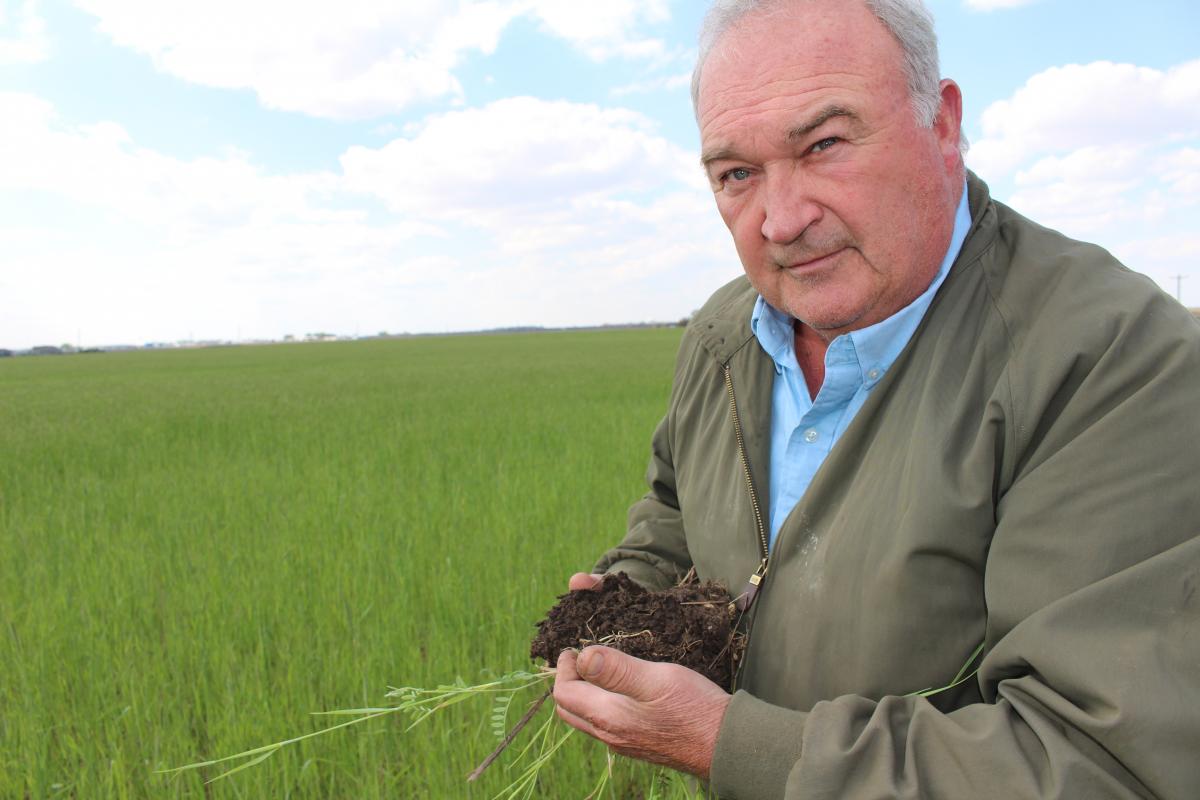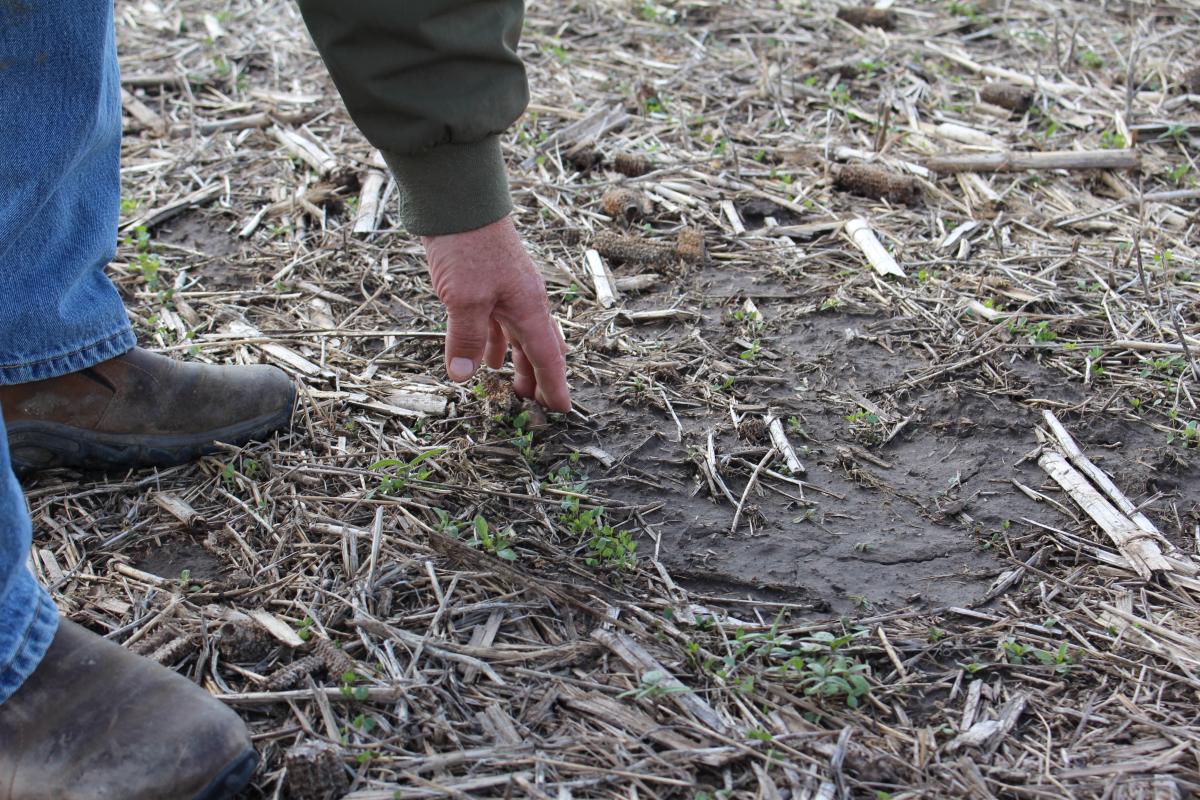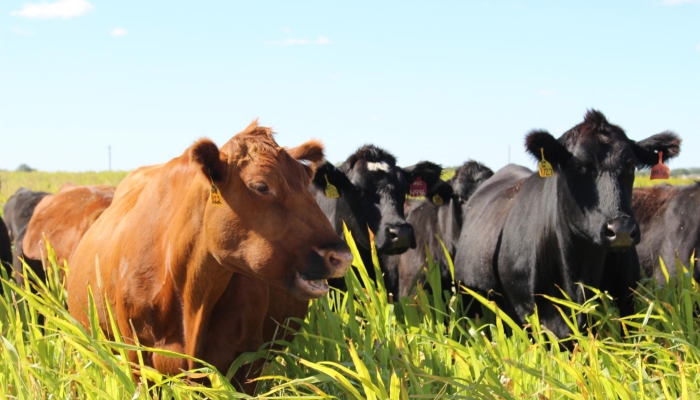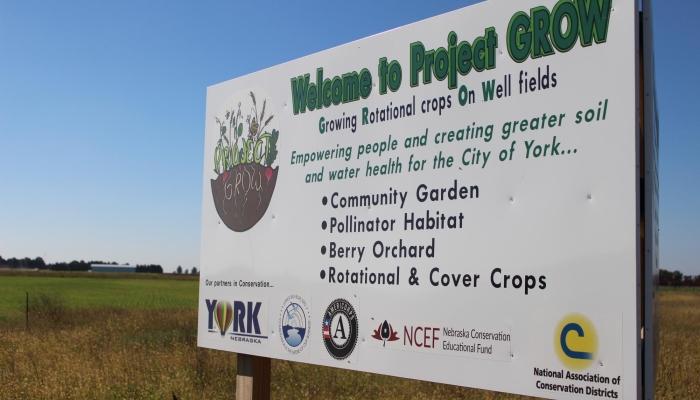Soil Health Still GROWing in Demonstration Fields
Now in its fourth year, the Project GROW (Growing Rotational crops on Wellfield) demonstration fields on the City of York wellfield are trying something new: alfalfa and sorghum.
The five-year collaboration between the city and the NRD involves farming 120 acres using soil health practices including diverse crop rotations, cover crops, livestock grazing, and reduced tillage. Soil health practices are shown to reduce the leaching of nitrogen and other agrochemicals into the groundwater supply. The goal of this project is to improve the soils above the wellfield (where water for residents of the City of York is drawn) and thus protect water quality.
This growing season, alfalfa will be planted on the south field and sorghum on the north. This is the first time either of these crops have been cultivated at the NRD site. Introducing new crops into the rotation provides natural pest and weed control, which means less inputs of pesticide and herbicide are needed, said Dan Leininger, NRD water conservationist. Additionally, alfalfa roots can reach lengths of 20 feet. These elaborate root structures break up compaction in the soil and increase aeration and water holding capacity. When these roots decompose over time, they release nutrients throughout the soil profile that feed the diverse microbiome required for a healthy soil system. “With these kinds of crop practices, you have more natural mineralization, so that over time you don’t need as much commercial fertilizer,” added Leininger.

Currently, the north field has a cover crop mix of rye and hairy vetch growing on it. In the next few weeks, the sorghum will be planted “green” using a drill--seeds will be deposited into a narrow furrow of soil cut into the cover crops. The rye and hairy vetch will then be terminated, but will continue to provide soil protection and feed the microbiome as they decompose. Sorghum, also known as milo, is a popular ingredient for cattle and bird feed. Leininger says there is increasing demand for this crop, which requires less water to grow than corn and is ideal for dryland acres.
Each year, the soil at Project GROW is tested in two ways. A conventional soil test is conducted that measures the amount of nutrients in the soil. These measures provide a guide for how much fertilizer will be necessary for a particular crop and yield goal. Leininger says this year, cooperating farmer Scott Gonnerman will add 80 lbs of phosphorus per acre to the alfalfa, but likely no other inputs. A Haney Test will also be run on soil samples from the GROW fields, which will indicate the amount of nutrients available to microbes, as a proxy for soil health. After three years of soil health practices implemented on this ground, Leininger expects the Haney Test to show significant improvement in soil microbial activity.
There are some soil health improvements that require no testing to document. In previous years, a section of the north field had gullies developing where heavy rains would wash out the soil. Erosion like this can be a major problem in Nebraska. The solution is cover crops, explains Leininger. Keeping the soil covered year-round strengthens the soil structure and protects the topsoil from washing away in a heavy rain. “You can really see how we are healing this land,” said Leininger proudly.
Last fall, cattle were used to graze the rye cover crop, providing a secondary income stream for the property, as well as an additional opportunity for improvement to the soil. Incorporating livestock grazing with cover crops can be exceptionally beneficial to the soil system, says Leininger, as livestock fertilize the soil naturally.

The five-year collaboration between the city and the NRD involves farming 120 acres using soil health practices including diverse crop rotations, cover crops, livestock grazing, and reduced tillage. Soil health practices are shown to reduce the leaching of nitrogen and other agrochemicals into the groundwater supply. The goal of this project is to improve the soils above the wellfield (where water for residents of the City of York is drawn) and thus protect water quality.
This growing season, alfalfa will be planted on the south field and sorghum on the north. This is the first time either of these crops have been cultivated at the NRD site. Introducing new crops into the rotation provides natural pest and weed control, which means less inputs of pesticide and herbicide are needed, said Dan Leininger, NRD water conservationist. Additionally, alfalfa roots can reach lengths of 20 feet. These elaborate root structures break up compaction in the soil and increase aeration and water holding capacity. When these roots decompose over time, they release nutrients throughout the soil profile that feed the diverse microbiome required for a healthy soil system. “With these kinds of crop practices, you have more natural mineralization, so that over time you don’t need as much commercial fertilizer,” added Leininger.

Currently, the north field has a cover crop mix of rye and hairy vetch growing on it. In the next few weeks, the sorghum will be planted “green” using a drill--seeds will be deposited into a narrow furrow of soil cut into the cover crops. The rye and hairy vetch will then be terminated, but will continue to provide soil protection and feed the microbiome as they decompose. Sorghum, also known as milo, is a popular ingredient for cattle and bird feed. Leininger says there is increasing demand for this crop, which requires less water to grow than corn and is ideal for dryland acres.
Each year, the soil at Project GROW is tested in two ways. A conventional soil test is conducted that measures the amount of nutrients in the soil. These measures provide a guide for how much fertilizer will be necessary for a particular crop and yield goal. Leininger says this year, cooperating farmer Scott Gonnerman will add 80 lbs of phosphorus per acre to the alfalfa, but likely no other inputs. A Haney Test will also be run on soil samples from the GROW fields, which will indicate the amount of nutrients available to microbes, as a proxy for soil health. After three years of soil health practices implemented on this ground, Leininger expects the Haney Test to show significant improvement in soil microbial activity.
There are some soil health improvements that require no testing to document. In previous years, a section of the north field had gullies developing where heavy rains would wash out the soil. Erosion like this can be a major problem in Nebraska. The solution is cover crops, explains Leininger. Keeping the soil covered year-round strengthens the soil structure and protects the topsoil from washing away in a heavy rain. “You can really see how we are healing this land,” said Leininger proudly.
Last fall, cattle were used to graze the rye cover crop, providing a secondary income stream for the property, as well as an additional opportunity for improvement to the soil. Incorporating livestock grazing with cover crops can be exceptionally beneficial to the soil system, says Leininger, as livestock fertilize the soil naturally.

Leininger examins the alfalfa sprouts emerging at Project GROW.


